Anatomy commonly relates to the dissection of an animal or plant in order to study its structure. But it is also defined as an analysis or minute examination. This is an analysis of a painting that came to be titled “The Fishermen.” My only regret: I wish I had photographed the process more methodically! But perhaps the process (that miraculously came together as if I had orchestrated it) will help illuminate my painting process.
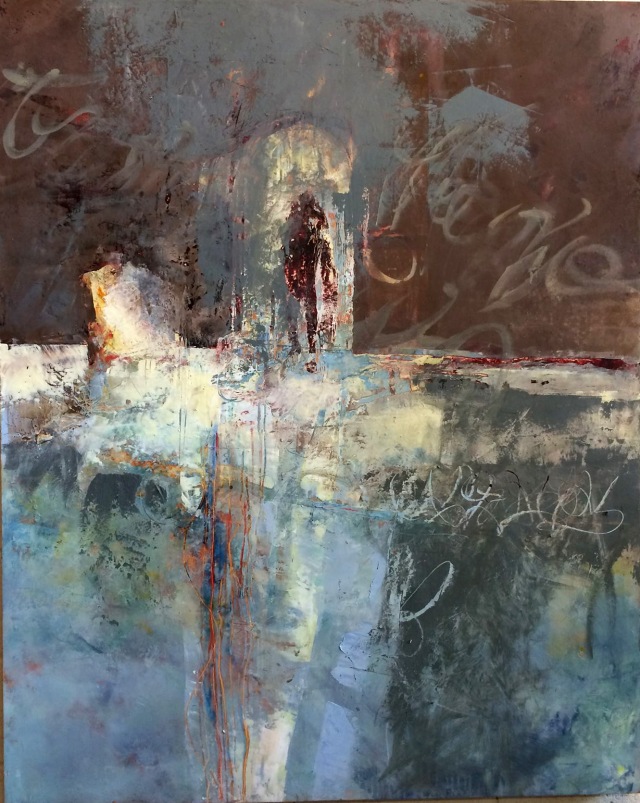
“Art is work and the making of things is about process—a ‘truthful activity,’ Makoto Fujimura calls it–-that which unveils the veiled truths of what it means to be human, to plumb the depths of reality”(Catherine Page). My work is about this process of revealing true reality. It includes experience, art practices, education, intuition, and a “liberated imagination“–liberated by faith in the Creator God who holds all reality together and is the wellspring of truth and light.
I had no pre-planned idea where this painting would take me. I had been reading Island of the World by Michael O’Brien and his poetry at the back of the book (“Beneath the Waves,” p. 822-825) was an important influence. A 4′ x 5′ gessoed panel was ready for the application of oils and cold wax medium. My main tool, a yellow-handled dough scraper, was lying ready on the table.
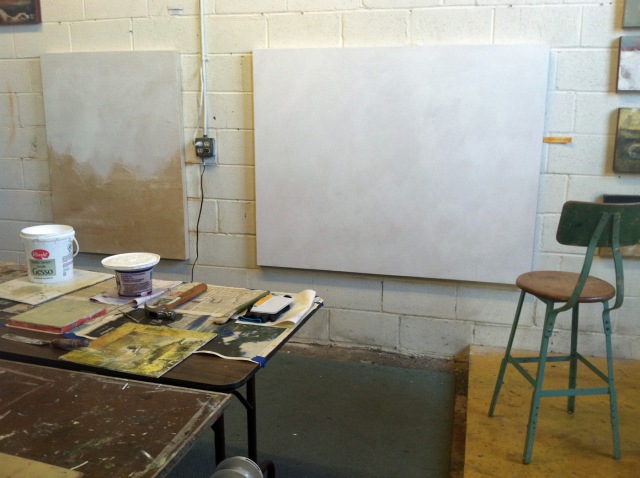
I chose a warm Quinacridone Gold as the unifying base color (and a bit of red), hoping that fiery glory might show through later. Then I layered these warms with cool blues to begin a watery theme.
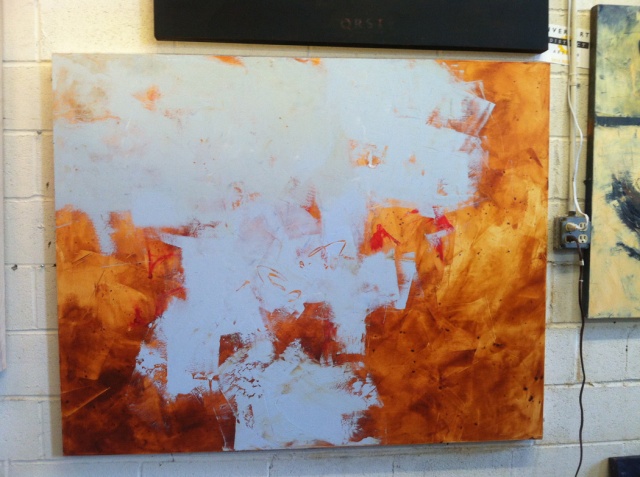
The blues blended into the oranges while the paint was wet. I welcomed the subtle mixing of these compliments. I scumbled my scraper across the surface, allowing imperfections, scratch marks, and lines to add interest and texture. Scribbled words also enhanced the mystery and meaning in the layering process.
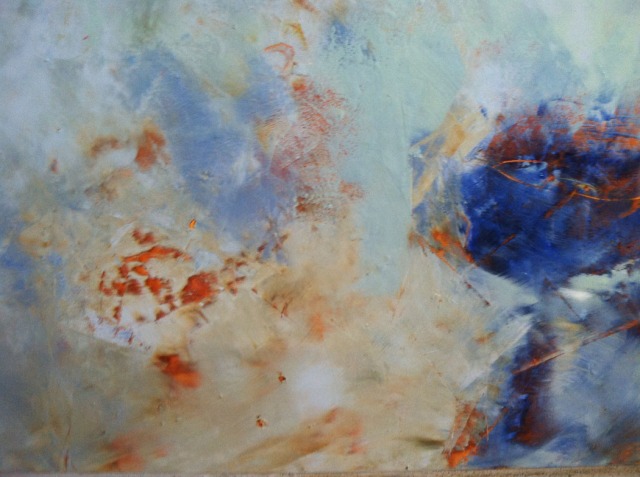
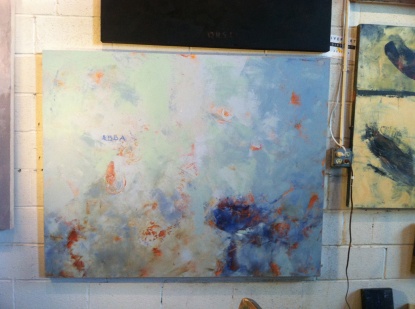 This Hebrew word, abba, was hidden in subsequent layers.
This Hebrew word, abba, was hidden in subsequent layers.
I began working horizontally but the darker blues on the right suggested ocean and “the one who came on the waters of time.” Then a “swimmer” appeared in my imagination, so I scraped off some of the darker blue to reveal his shape “beneath the waves.”
“To you, the one who came on the waters of time, like a swimmer, you passed in front of my eyes . . . . You were there a sudden presence, a form, a fire, slow silent fire . . .” (Michael O’Brien).
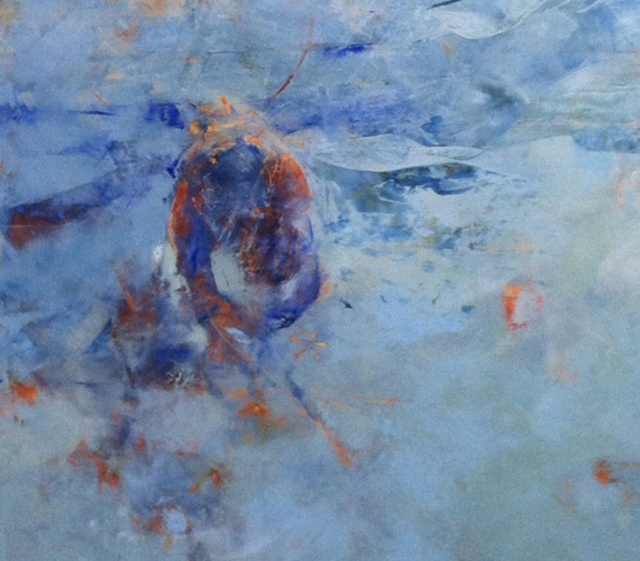
But “the swimmer” was hidden in the subsequent layers of blues and became “the form, finely wrought, fire upon the water” (ibid).
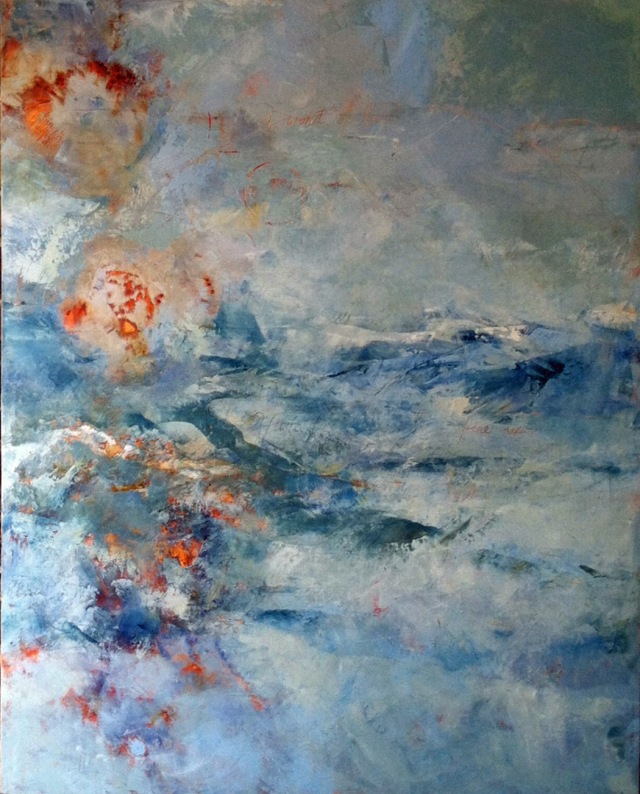
(details)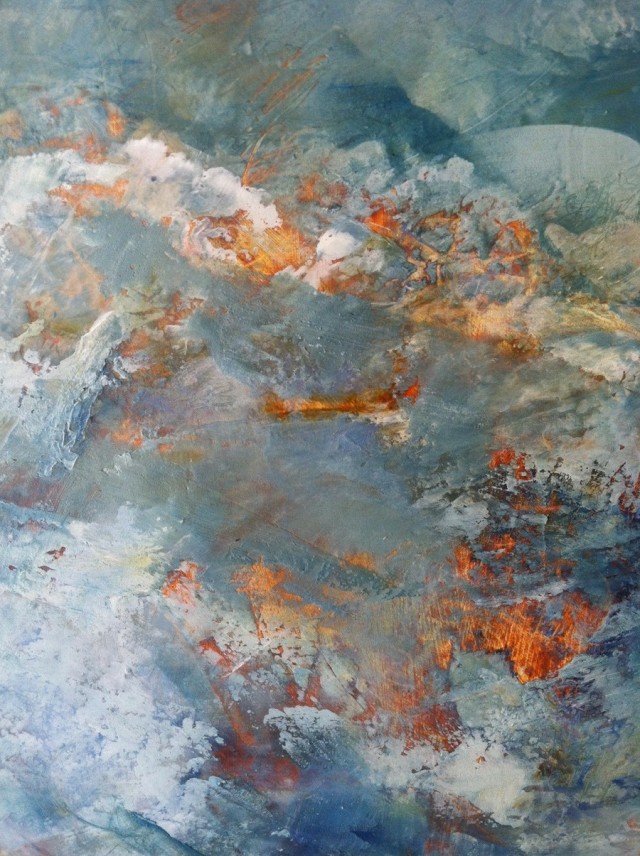

Then I waited several weeks before returning to this painting. It was too monochromatic and lacked a strong focal point. Courageously I attacked it with red. Perhaps I was seeking Incarnation and “the one who came by water and blood — Jesus Christ; not by water only but by the water and the blood”(1 John 5:6). I allowed a figurative shape to appear in the negative shapes and added warm oranges and a lurid yellow around it. This layering would build the “history” of the piece, allowing glimpses of red and yellow to show through later. I also sprayed these warm colors with mineral spirits. They ran down the center of the painting to break up the space on the lower half.
I applied gold leaf above this figurative shape to suggest glory. I was thinking of the One who walks on water, but unfortunately controlling the miraculous is not possible. Instead of mystery my painting felt contrived. To unify it, I had to forgo any predetermined outcome. I had to release it and approach it as design. Then, perhaps a miracle could happen.
The colors were not right, so I added glazes of red and greens and covered the distracting (and contrived) gold leaf. A large painting is more difficult partly because it is challenging to mix the correct amount of color needed for a large area.
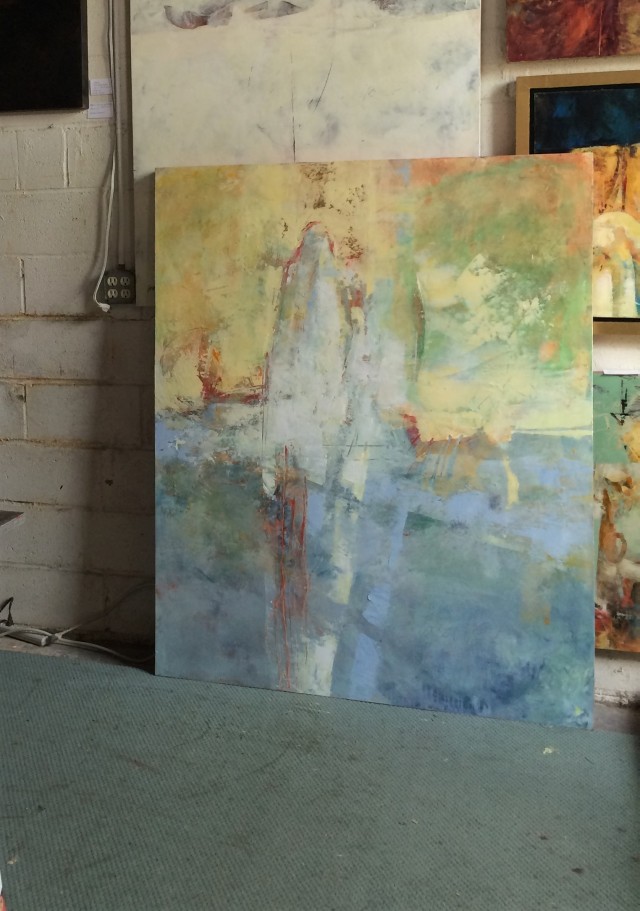
(Sadly at this frenzied turning point, my process overshadowed my concern for taking photos!)
I mixed bolder colors — a huge amount of the complimentary color — a dark purple. I covered the intrusive figures (now there were two “water-walkers”) and courageously lost the entire top half of the painting, using rollers. It was an ominous dark, but I left a bit of white to the left side and scraped away an arch shape.
I do not recall how the two figures emerged from the grey blue that I layered over the purple. But to break up this dark expanse I loaded my brush with mineral spirits and began making automatic marks, the music of the spheres or perhaps God singing His Creation into being. Then I immediately subtracted the dissolved color with a sponge roller to reveal the very first blue layers underneath. The miracle was beginning to happen!
In releasing or “giving up control, “mystery and beauty began to emerge. The random large “speech marks” became God’s voice on the surface of the deep as He spoke creation into existence.
(details)
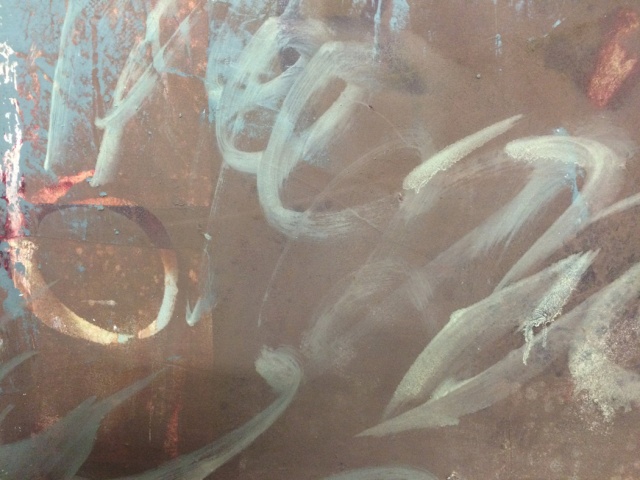
Finally, I worked the central figurative focal point by incising the painted layers down to the first layers of paint. The Nets of God “emerged” next to the figures referencing my Nets of God Series. I removed some of the paint around the two figures, but the tiny cross between them was unplanned! The crux of history showed itself miraculously. It subtly joined the two figures — God the Father and God the Son (The Fishermen), who were coming to gather the elect from every nation. They were standing at the gates of heaven.
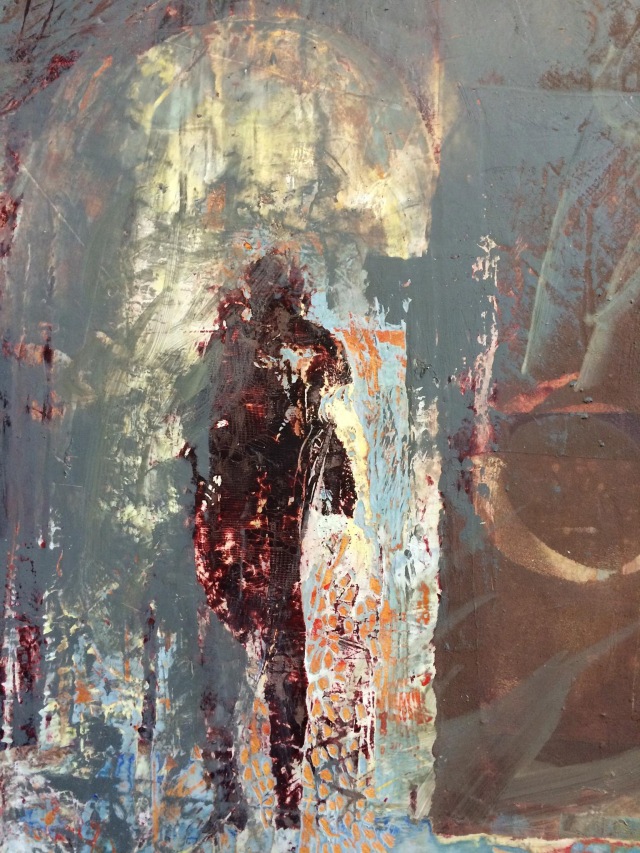
I am always amazed how the wrestling and work that is painting is a miracle — a miracle given to us as creators by The Creator which allows us to reveal the God who created the visible and invisible world. Painting is indeed a process of working and waiting on God to direct my heart, soul, mind, as well as my hand.
“For in Him we live and move and have our being, as even some of your own poets have said, ‘For we also are his children.’” Paul is explaining the divine to the Athenians at the Areopagus in Acts 17. Life is sacramental. We are created in the image of God to give him glory.






Thank you for sharing the process and the “miraculous” coming together of this creation!! Fabulous piece each step of the way!
Loved the process shots and your narrative of them. I too am an artist who paints from chaos, prayerfully expecting the Lord to show up and guide my hand. It is a great comfort to know there is another artist out there who ‘gets it’!
all I can say is ….YES!
yo
On Fri, Feb 3, 2017 at 9:34 PM grace carol bomer wrote:
> grace bomer posted: “Anatomy commonly relates to the dissection of an > animal or plant in order to study its structure. But it is also defined > as an analysis or minute examination. This is an analysis of a painting > that came to be titled “The Fishermen.” My only regret: I wish” >